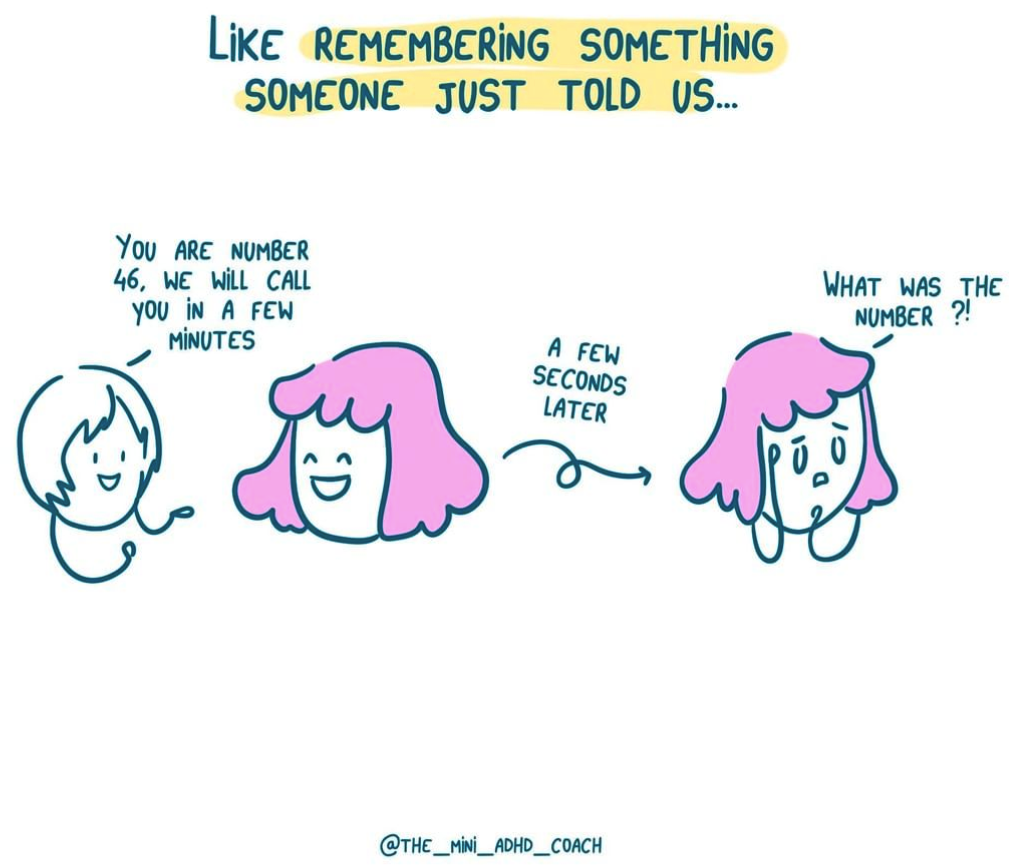4 ways accommodating neurodiversity can strengthen inclusive design for aging populations.
Best Practice
By Rachael Camp
Date: 04 April 2023
To achieve maximum impact, inclusive design practices must also address neurodivergent people. In this article, you will learn how focusing your inclusive design efforts on neurodiversity can meaningfully support older adults with their use of technology.
"I don't do apps"
I don’t know about you, but have you ever had to support your mum or dad or older relatives with technology? Well then, you will understand my perspective, as this is something I have done all my life.
I remember when we had dial-up Internet installed in our house in 1998. Between sessions on Neopets and the wild west of the early internet, my brother and I were always the “go-to” for how to do various things with technology (like a family IT Service desk), and I would often spend hours helping my dad, even going as far as typing out his Word documents for him and styling his PowerPoint presentations.
Since the iPhone was introduced in 2007, my dad never quite got how to use an app, despite always having the latest iPhone (he had the iPhone 14 way before I did!). Whenever I visit my parents and we go out, and it is suggested that we use an app for a certain service (for example, paying a bill in a restaurant), he will proudly declare “I don’t do apps”. While I find this really embarrassing, the truth is he is not the only person who thinks like this. It’s just that not so many people put their opinion forward in such a forthright manner.
From a user research point of view, however, this is gold.
He raises a very valuable point. As someone who works in his local community, my dad has highlighted to me the difficulties that older adults face in terms of accessing services such as banking, paying bills, dealing with tax affairs, and even paying fees in a car park. We have become so used to using apps and technologies, that we often forget that some people in the later stages of life are still doing things with pen and paper. However, it is becoming increasingly difficult to do that and, with the introduction of AI, we will expect to see things get a lot more automated.
From what he’s told me, there are three different attitudes in the camp of people who don’t use apps and services:
- There is a level of mistrust. Thanks to scams or fraud that has happened with services such as online banking, and especially because many of them target those who are less IT literate.
- There is no desire to engage with the services. “Why do I want to move online when I can just do things by pen and paper, the way that I have always done them?” he says when describing the attitude of his fellow churchgoers.
- They don’t know what to do and feel completely overwhelmed. The idea of using an iPhone or an app is intimidating and they don’t feel comfortable navigating this area alone.
Clearly, my efforts to encourage people to use the church wifi by changing its name to “The Holy Cloud” didn’t work!
And where does that leave our aging population? Essentially, in a bit of a crisis.
So what does this have to do with neurodiversity exactly?
Inclusive design that addresses neurodivergent people can have a positive impact on business and society, with particular advantages for communities with aging populations. Allow me to explain.
A good example of how accommodations for disabled people can benefit the wider population is seen in the Cut Curb effect. Recently I have been reading about the Social Model of Disability. This is the idea that it is the environment in which we live that is in fact disabling people.
So, with this in mind, we can begin to apply this to neurodiversity. For those that don’t already know, neurodiversity is a term coined by Judy Singer in the late 1990s to describe the diversity of brain functioning, thought, and behavior in society. Neurodivergent is the term used for those who think “outside of the norm” and includes a range of neurotypes such as ADHD, Autism, Tourettes, Dyslexia, DCD/Dyspraxia, Dyscalculia, Dysgraphia, Sensory Processing Disorder, Bipolar Disorder, and many more.
For example, ADHD (attention deficit hyperactivity disorder) affects the function of the brain, with differing functioning of the prefrontal cortex compared to the general population. It is often associated with differences in the executive function, which is defined by Psychology Today as:
“...a set of cognitive processes and mental skills that help an individual plan, monitor, and successfully execute their goals. The ‘executive functions,’ as they’re known, include attentional control, working memory, inhibition, and problem-solving, many of which are thought to originate in the brain’s prefrontal cortex.”
Differences in Executive Function are not limited to ADHD and are present across many different neurotypes. When an individual deals with executive functioning differences, they might be able to do complex tasks, like quickly learning a new skill, but struggle to remember what you told them just 5 minutes earlier. This is to do with differences in working memory.

Executive functioning differences also appear across different neurotypes such as dyslexia. Interestingly, there are links to changes in executive functioning throughout our lifespan, improving in childhood and then decreasing in later life.
Processing speed is another thing that needs to be considered. Many people with ADHD, autism, and/or dyslexia also have a slower cognitive processing speed. This means they may need more time to process information, than the general population. When we receive information, we need to take it in, reach a judgement, and then formulate a response. This can mean that someone who experiences slow processing may only know the answer to a question minutes or even hours later. It may take them longer to break down and process complex tasks than their peers. Notably, anxiety can also cause slow processing, even in neurotypicals, so when a person goes into a situation feeling anxious, it can make it harder for them to process information.
Like executive functioning differences, cognitive processing speed changes throughout the lifespan of a person. It can also be an indicator of dementia, which is why perhaps we hear stories of late-diagnosed neurodivergent people believing that have early-onset dementia before receiving their diagnosis.
With that in mind, would a greater focus on support for executive functioning and slow processing challenges in UX design also support older adults? Would it make carrying out tasks online and in-app more practical, easier to use, and allow less room for catastrophic errors? It could well be the case.
What does Neurodivergent-friendly look like?
Jessica McCabe is a Youtuber who puts out content aimed at helping other ADHDers. In her video “Why Stuff Meant For Kids Actually Works For Adults with ADHD” she talks about how often in the ADHD community, we use items aimed at children and teenagers, and because they are aimed at brains that are not fully developed in terms of their executive function and therefore, those with executive functioning differences might find that product more suitable for them.
This got me thinking about some of the challenges that neurodivergent people face, such as booking flights for the wrong date, becoming overstimulated by flashy websites, having difficulty following long and complicated instructions, etc. Research by Monzo Bank in 2022 revealed that having ADHD can cost an extra £1600 per year (around 1800 CHF at the time of writing).
What if we focus on making these processes easier and supporting users better? Everyone makes these kinds of mistakes sometimes, so we benefit everyone by improving the user experience for neurodivergent people.
There are guidelines around visual design to support neurodivergent people, but I believe that further benefits happen when we put principles around reducing cognitive load, keeping the user journey free of distractions, and providing adequate support front-and-center of our design process. By doing this, we will reap the benefits for the neurodivergent community and beyond.

4 ways to embrace neurodiversity in your inclusive design practices
Here are four things you can do to accommodate neurodivergent people and make everybody’s lives a lot easier:
-
Make expectations clear
- Tell the user what they need to complete a task (e.g. if they need their passport, driving license, credit card, or customer reference number).
- Before booking, provide a summary of the final transaction before payment and allow direct editing of fields (e.g. if they need to edit something in step one, don’t make them go through 6 steps again to get back to the summary screen).
- Don’t sell upgrades that could distract and derail a user until after the payment has been processed.
- Avoid popups when a user is completing a task.
-
Allow for user errors and make resolving these as easy as possible
- Make it very clear when a state is changed (e.g. taking first class vs second class on a train) and the consequence of that change.
- Make amending bookings clear and easy to do in the event a mistake is made (e.g. don’t make users go through 5 different menus to call customer services).
- Send important information such as booking references via email and allow for time-critical events, allowing them to be quickly and easily added to digital calendars.
- Don’t rely on one communication method to make amendments or ask for help. Users have their preferences, for example, autistic people or people with auditory processing disorder (APD) could find phone calls difficult, but others might like the reassurance of a human.
- Train customer service staff to be compassionate towards those who have made errors. Statements such as “That is your fault, not ours” is not helpful and can cause distress, especially as neurodivergent people can experience emotional dysregulation.
-
Reduce demand on executive function and working memory
- Ensure that users have to remember as little information as possible.
- Reduce choice, have a limited number of options, and clearly explain what they are and the differences between them. Reducing the need to make decisions assists those who struggle with impulsivity and response inhibition.
- Avoid “time voids”. For immersive activities, ensure that the user has access to the time. Many neurodivergent individuals experience time blindness.
- Utilize chunking of information to allow neurodivergent brains to process at their own pace.
-
Reduce anxiety and pressure
- Avoid popups. It can be very distracting and can completely derail the user from their goal when visiting their site.
- Avoid scare tactics (e.g. someone is buying these tickets right now). This may cause users to rush and make errors or cause anxiety, potentially slowing down their cognitive processing speed.
- Use clear visual hierarchy and reduce the use of illustrations, flashing lights, and loud music.
- Offer a version of your site or service in dark mode, as some users find white backgrounds overstimulating.
- Give users time. Countdowns can be overwhelming for many people, including users who experience slow processing.
Everyone deserves the chance to "do apps"
As well as making a service more neurodivergent-friendly, the tips mentioned in this article can also assist older adults in the following ways:
- Being transparent will help combat mistrust that older users may harbor.
- Offering the support that older users may crave will build engagement.
- Making expectations clear and giving users more time will reduce the likelihood of overwhelming them.
And maybe, just maybe, with the adoption of more cognitive-friendly design, as well as a more inclusive and equitable world, I might see an independent Dad who feels more like “doing apps” in the future.




